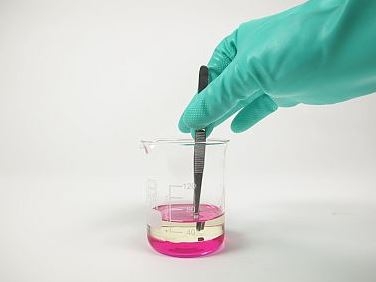Principle
Sebacic acid chloride and hexamethylene diamine react with each to form a polymer. If the substances are dissolved in solvents of different density, the condensation occurs on the phase boundary. A thread can be continuously pulled out. The interfacial condensation is a industrially hardly used procedure, since the production of polyamides by melting leads to better results. The starting materials used for the condensation can be greatly varied, so that a huge number of different polyamides is produced. The polymer produced under these experimental conditions is called nylon 610 (read: six, ten).
Learning objectives
- Nylon can be prepared by a polycondensation reaction
Benefits
- Easy teaching and efficient learning by using interactive experimentation PHYWE-Software
- Experiment is part of a complete solution set with experiments for the topic Chemistry of Polymers matched with international curriculum: all topics are covered

